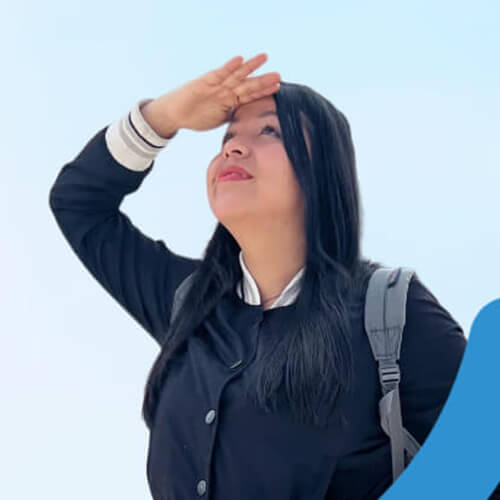Ecuador Highlands Faqs
ECUADOR HIGHLANDS FAQ
Click on the question link below to find your answer.
1. I am traveling in the Ecuadorian Andes region. Should I be worried about altitude?
The Ecuadorian Highlands encompass a range of altitudes, with elevations varying depending on specific locations. Major cities and tourist destinations in the Ecuadorian Highlands include Quito, Cuenca, Otavalo, and Baños, each with its own altitude:
- Quito: The capital city of Ecuador, Quito, is situated at an altitude of approximately 2,850 meters (9,350 feet) above sea level. It is one of the highest capital cities in the world.
- Otavalo: Famous for its indigenous market, Otavalo is situated at an altitude of approximately 2,530 meters (8,300 feet) above sea level. It is located in the Imbabura province, north of Quito.
- Cotopaxi: Cotopaxi is the world's highest active volcanoes and a prominent landmark in the Ecuadorian Andes. At an altitude of approximately 5,897 meters (19,347 feet) above sea level, Cotopaxi's snow-capped summit is a sight to behold. Visitors can explore Cotopaxi National Park, hike to the refuge at the base of the volcano, or attempt to summit the peak with the guidance of experienced guides.
- Quilotoa: The Quilotoa crater lake, located in the Cotopaxi province, is a breathtaking natural wonder situated at an altitude of approximately 3,914 meters (12,841 feet) above sea level. Visitors can hike along the crater rim, kayak or take a mule ride down to the emerald-green lake below, offering stunning panoramic views of the surrounding Andean landscape.
- Baños: Known for its hot springs and adventure activities, Baños is located at an altitude of about 1,820 meters (5,970 feet) above sea level. It is nestled in the Andean foothills, between the Amazon and Andes region.
- Chimborazo: Chimborazo is Ecuador's highest peak and the tallest mountain in the world when measured from the center of the Earth due to its location along the equatorial bulge. Standing at an impressive altitude of 6,268 meters (20,564 feet) above sea level, Chimborazo is a popular destination for mountaineers and adventurers seeking a challenging ascent.
- Cuenca: Located in the southern part of Ecuador, Cuenca sits at an altitude of around 2,500 meters (8,200 feet) above sea level. It is renowned for its well-preserved colonial architecture and cultural heritage.
When traveling to the Ecuadorian Highlands, especially if you are coming from sea level or low-altitude areas, it's important to acclimatize gradually to the higher elevations to avoid altitude sickness. Here are some recommendations:
- Take it Slow: Allow your body time to adjust to the altitude by taking it easy during your first few days in the highlands. Avoid strenuous physical activity until you feel acclimatized. As Quito is the entry point for most of the international flights, we recommend staying here a couple of days, and try to avoid strenuous activities at least the first day such as the Quito Cable Car or the Cotopaxi Volcano.
- Stay Hydrated: Drink plenty of water to stay hydrated, as the air at higher altitudes is drier and can lead to dehydration more quickly. Limit your intake of alcohol and caffeine, as they can contribute to dehydration.
- Eat Light: Stick to light, easily digestible meals during your first few days at high altitude. Avoid heavy or spicy foods that may exacerbate altitude sickness symptoms.
- Consider Medication: If you're prone to altitude sickness or are concerned about experiencing symptoms, consider taking medication such as acetazolamide (Diamox) to prevent or alleviate altitude sickness. Consult with a healthcare professional before taking any medication.
- Coca Leaf Tea or Hot Beverages: Sipping on coca leaf tea, a traditional remedy in the Andes, can be effective in alleviating mild altitude sickness symptoms. Alternatively, consuming hot beverages is also considered beneficial, though it's advisable to avoid those with milk as the fat content may have counterproductive effects.
By following these recommendations and allowing your body time to adjust to the altitude gradually, you can enjoy your trip to the Ecuadorian Highlands while minimizing the risk of altitude sickness. Don´t forget that each person adapts to it in a different way and some may need a bit longer of time to adjust, while others don´t.
2. What is the local currency in Ecuador?
The local currency in Ecuador is the United States Dollar (USD). Since the year 2000, Ecuador has adopted the USD as its official currency, replacing the former national currency, the sucre. This decision was made to stabilize the economy and curb hyperinflation.
When traveling to Ecuador, it's advisable for visitors to carry smaller denominations of USD bills, such as $1, $5, $10, and $20, as larger bills ($50 or $100) are often not accepted in many establishments, especially in more remote areas or smaller towns. This is because businesses may have difficulty providing change for larger bills, leading to inconvenience for both the visitor and the merchant. Therefore, it's wise to exchange larger bills for smaller denominations before traveling to Ecuador or withdraw smaller amounts from ATMs as needed. People in Ecuador is also usually afraid of counterfeited money and so they prefer not to accept $50s or $100s.
Additionally, travelers should be mindful of the condition of their USD bills, as torn, defaced, or overly worn bills may not be accepted by merchants or may be subject to lower exchange rates. It's advisable to bring crisp, clean bills in good condition to ensure hassle-free transactions during your stay in Ecuador.
Moreover, while credit and debit cards are widely accepted in larger cities and tourist areas, it's always a good idea to carry some cash for transactions in smaller establishments or when traveling to more remote regions where card payment facilities may be limited.
3. What are the options for accessing WiFi or the internet while traveling in Ecuador?
While traveling in Ecuador, you'll find various options for accessing WiFi or the internet to stay connected during your trip. Many hotels, hostels, cafes, and restaurants in major cities and tourist areas offer complimentary WiFi for guests. Additionally, mobile data services are widely available throughout the country, with several local providers offering prepaid SIM cards and data plans for purchase. You can easily find SIM cards at convenience stores, kiosks, or official stores of mobile network operators like Claro, Movistar, and CNT. These SIM cards can be used in unlocked smartphones or portable WiFi devices (MiFi) to access the internet while on the go. However, it's essential to check coverage maps and network availability, especially if you plan to explore more remote or rural areas where signal strength may vary. Overall, with the availability of WiFi hotspots and prepaid data options, staying connected and accessing the internet in Ecuador is convenient and straightforward for travelers.
4. What sets apart an English-speaking guide from a Spanish-speaking driver when touring with Happy Gringo Travel in Ecuador?
The differentiation between an English-speaking guide and a Spanish-speaking driver with Happy Gringo Travel lies not only in language proficiency but also in the nature of the travel experience offered. In Ecuador, where much of the tourism originates from English-speaking countries, Happy Gringo Travel primarily provides English-speaking guides for specific locations, such as the Cotopaxi National Park, where English communication is crucial for compliance with park regulations and a comprehensive understanding of the environment. Conversely, Spanish-speaking drivers may be preferred in other areas, particularly for nature-focused tours where the attractions speak for themselves. While our Spanish-speaking drivers may not be fluent in English, they usually use communication apps that facilitate interaction with passengers. Moreover, being constantly on the road allows them to recommend off-the-beaten-path eateries and picturesque spots, enhancing the overall travel experience. While most passengers opt for our recommended options, Happy Gringo Travel is committed to tailoring experiences to individual preferences, ensuring a memorable and personalized journey for every traveler.
5. What types of vehicles does Happy Gringo Travel utilize for its tours, and how are they determined?
Happy Gringo Travel selects vehicles based on the number of passengers and the specific tour requirements to ensure optimal comfort and convenience. For smaller groups of 3 to 4 people, an SUV is typically employed, offering comfortable transportation for passengers. When the group size exceeds 4 individuals, Happy Gringo Travel often arranges for a Spanish-speaking driver accompanied by an English-speaking guide, utilizing a van to accommodate the larger group while ensuring effective communication. As the number of passengers increases further, larger transport options such as campers or buses may be utilized to accommodate both passengers and their luggage comfortably. The primary goal is to prioritize passenger comfort and convenience throughout the journey, regardless of the group size or tour itinerary.
6. Can you elaborate on the flexibility of tour timings with Happy Gringo Travel?
In general, Happy Gringo Travel offers flexible tour timings to accommodate the preferences and needs of passengers. However, there are certain recommended timings based on the nature of the tour destinations. For instance, in Quito, attractions such as the Equator monument or downtown museums typically open later in the morning, making early starts less practical. Conversely, for destinations like Cotopaxi or Quilotoa, it's advisable to begin early in the day as travel times can be significant, and weather conditions may affect visibility later in the day. While Happy Gringo Travel provides suggested timings for optimal tour experiences, passengers ultimately have the flexibility to choose their preferred timings, ensuring a customized and enjoyable journey tailored to their preferences.
7. What are the common bed sizes in Ecuador for travelers, and how do they differ from single, twin, full, queen, and king sizes?
In Ecuador, single beds are not commonly found. Instead, the most common bed sizes for travelers are twin, full, queen, and king sizes:
Twin Size: A twin bed in Ecuador typically measures around 39 inches wide by 75 inches long (99 cm × 190 cm). It's suitable for one person and is often found in budget accommodations or single rooms.
Full Size: Also known as a double bed, a full-size bed in Ecuador is approximately 54 inches wide by 75 inches long (137 cm × 190 cm). It can comfortably accommodate one person but is better suited for couples or solo travelers who prefer more space.
Queen Size: A queen bed is a popular choice in hotels and guesthouses in Ecuador. It usually measures around 60 inches wide by 80 inches long (152 cm × 203 cm). It offers ample space for couples or solo travelers who prefer extra room to stretch out.
King Size: King beds are less common but can still be found in upscale hotels or luxury accommodations in Ecuador. They typically measure around 76 inches wide by 80 inches long (193 cm × 203 cm). King-size beds provide the most space and comfort, ideal for couples or travelers who desire a luxurious sleeping experience.
Travelers in Ecuador should inquire about bed sizes when booking accommodations to ensure they have the appropriate size for their needs and preferences.
8. I had quoted a trip adjusting to my needs and got an overall price. Can I get an itemized price? How can I obtain an itemized price breakdown for the trip I've customized, considering that I've already received an overall price?
When combining various elements such as tours, guides, transfers, transportation, and other services into a tailored package, we've secured special deals with each supplier or operator. While we can't disclose these individual prices due to contractual agreements, bundling them together allows us to offer a lower overall price. The nature of this bundled pricing means that it's not possible to provide an itemized breakdown, as passengers wouldn't be able to discern which costs are associated with each component. However, be assured that by packaging these services together, you're receiving the best value for your customized trip.
9. Is it possible for a solo traveler to join a group tour or receive a customized trip quote?
While Happy Gringo is dedicated to providing personalized experiences tailored to individual preferences, we primarily offer private tours. Ecuador's tourism landscape may not always support a wide array of shared tours that perfectly match your desired places to visit, itinerary, dates, budget, and accommodation preferences. As a result, our offerings are primarily quoted for private tours.
It's important to note that private tours for solo travelers can be relatively more expensive compared to group tours. This is because costs such as guides and transportation are not divided among multiple passengers but rather allocated to one individual.
However, our travel advisors are skilled at crafting itineraries that balance private experiences with shared activities, especially in destinations like the Amazon or the Galapagos Islands which does offer shared lodges/cruises/tours. By working closely with our advisors, solo travelers can explore options where shared activities are available to help adjust the trip to their preferences and budget while still ensuring a memorable and fulfilling experience. Feel free to reach out to one of our advisors to discuss how we can tailor a trip to suit your needs.
10. Can Happy Gringo adjust to my dietary requirements and/or allergies?
Absolutely, it's quite common for us to receive passengers with various dietary requirements, and the tourism industry in Ecuador has adapted to meet these needs. Whether you follow a gluten-free, vegetarian, vegan, pescatarian, or any other dietary restriction, our travel advisors can offer recommendations for suitable places to eat or tours that cater to your specific needs. When booking your trip, it's essential to mention any dietary requirements or allergies to ensure we can make appropriate arrangements.
It's important to note that kosher options may be available but could come at an additional cost, and not every establishment may offer them. However, with advance notice, we can explore options and make necessary arrangements to accommodate kosher dietary needs whenever possible. Don't hesitate to inform us of your dietary preferences so we can ensure your trip is as enjoyable and stress-free as possible.
11. I'm interested in climbing some of Ecuador's peaks. Which destinations should I consider, and how should I prepare for such an adventure?
Ecuador offers a plethora of stunning mountains that are perfect for climbing enthusiasts. Some of the most popular destinations for mountain climbing in Ecuador include:
- Cotopaxi: Standing at 5,897 meters (19,347 feet), Cotopaxi is one of the highest active volcanoes in the world and a favorite among climbers. Its perfect cone shape and impressive altitude attract both novice and experienced climbers.
- Chimborazo: As Ecuador's highest peak, Chimborazo rises to an impressive height of 6,263 meters (20,548 feet). Climbing Chimborazo is a challenging endeavor due to its altitude and technical aspects, but the stunning views from the summit make it a highly rewarding experience.
- Cayambe: Cayambe is Ecuador's third-highest peak, reaching an elevation of 5,790 meters (18,996 feet). Known for its beautiful glaciers and relatively straightforward ascent, Cayambe is a popular choice for climbers looking to hone their skills at high altitude.
- Illiniza Norte and Sur: The Illinizas are twin peaks located near Quito, Ecuador's capital. Illiniza Norte stands at 5,126 meters (16,818 feet), while Illiniza Sur reaches 5,248 meters (17,218 feet). Both peaks offer excellent opportunities for acclimatization and technical climbing.
To prepare for climbing Ecuador's mountains, ensure you focus on acclimatization, physical fitness, altitude sickness prevention, and acquiring appropriate gear and equipment. Consider hiring a certified guide service for safety and guidance. Happy Gringo Travel can assist you in consolidating all these aspects based on your needs and timeframe, ensuring a well-prepared and memorable climbing adventure in Ecuador's stunning mountain landscapes.
12. What are the safest transportation options for getting around in Ecuador, particularly in terms of taxis and buses?
While getting around Ecuador is generally safe, it's advisable to take precautions, especially when using taxis and buses. Here are some tips:
Taxis: It's generally safe to take taxis in Ecuador, especially those from official taxi stands or called from reputable sources like the airport or your hotel. Uber is also quite common in major cities. However, be cautious when hailing taxis on the street, particularly at night or in less populated areas.
Public Transportation: Ecuador's cities have bus networks, and Quito even has a metro system. While buses are a budget-friendly option, they can be crowded and may present opportunities for pickpocketing, especially during rush hours. If you choose to take a bus, keep a close eye on your belongings and avoid traveling during peak times if possible.
Overall, while taxis and Uber are generally safe and convenient options for getting around in Ecuador, it's essential to remain vigilant and take necessary precautions to ensure a safe and enjoyable travel experience.
13. Is it possible to arrive early at the airport before a late-night flight and access the VIP lounge and wait for my flight there?
While it's certainly possible to arrive early at the airport, it's important to note that the check-in process for airlines typically begins only three hours before the scheduled departure time. This is due to international aeronautical laws and regulations. Additionally, since most airlines only operate one international flight, staff may not be readily available to check bags and documents outside of this timeframe.
Regarding access to the VIP lounge, it's typically a paid service that allows you to stay for a maximum of three hours. If you wish to stay longer, you may need to pay for an additional three-hour block. Alternatively, some airports, such as Quito's, may have a resting lounge located in the shopping mall adjacent to the airport. However, it's essential to verify its availability and operating hours before making plans to utilize it.
14. Are there restaurants at locations like Cotopaxi or Chimborazo?
In these remote areas, guides or drivers typically provide recommendations for dining options nearby. They are familiar with the local establishments and can suggest places to eat along the way or upon arrival at your destination. Guides often outline the day's itinerary, including travel times and meal stops, ensuring that you have opportunities to dine comfortably during your excursion. Additionally, they may suggest bringing snacks or packed lunches for longer journeys or outings in areas where dining options are limited. This approach allows travelers to enjoy the local cuisine and ensure they have satisfying meals while exploring more remote regions of Ecuador.
15. What is it like to travel during public holidays in Ecuador, and when are these holidays?
Traveling during public holidays in Ecuador can be both exciting and challenging. Here are some key points to consider:
- Public Holidays: Ecuador celebrates several public holidays throughout the year. Some of the major holidays include New Year's Day (January 1st), Carnival (dates vary but typically in February or March), Good Friday (dates vary), Labor Day (May 1st), Independence Day (August 10th), and Christmas Day (December 25th). Additionally, there are regional holidays specific to certain cities or provinces.
- Increased Crowds: During public holidays, popular tourist destinations, transportation hubs, and attractions may experience increased crowds. It's advisable to book accommodations, transportation, and tours well in advance to avoid any last-minute availability issues.
- Cultural Celebrations: Public holidays in Ecuador often coincide with vibrant cultural celebrations, including parades, festivals, and traditional events. Travelers have the opportunity to immerse themselves in the local culture and witness unique festivities.
- Business Closures: On public holidays, many businesses, including shops, restaurants, and banks, may have altered operating hours or may be closed entirely. It's essential to plan accordingly and ensure you have access to essential services and amenities during your travels.
- Transportation Challenges: Public transportation schedules may be affected during public holidays, with reduced frequencies or altered routes. It's advisable to check the latest schedules and plan your travel arrangements accordingly to avoid any disruptions.
Overall, traveling during public holidays in Ecuador offers the chance to experience cultural celebrations and festivities, but it's essential to plan ahead to navigate potential crowds, business closures, and transportation challenges effectively.
16. What are some of Ecuador’s most famous dishes, and which ones should I make sure to try while visiting?
Ecuador boasts a rich culinary heritage, offering a diverse array of dishes that reflect the country's cultural diversity and regional influences. Here are some must-try dishes from various regions of Ecuador:
Coastal Region:
- Ceviche: A popular seafood dish made with fresh fish or shrimp marinated in lime juice, onions, tomatoes, and cilantro.
- Encebollado: A hearty fish soup made with tuna, yuca (cassava), onions, and tomatoes, seasoned with cilantro and served with pickled onions.
- Plantain Empanadas: Fried empanadas filled with mashed plantains and cheese, a delicious and popular snack.
Andean Highlands:
- Locro de Papa: A creamy potato soup flavored with cheese, avocado, and Andean herbs, often served with slices of avocado and crispy fried pork skin.
- Llapingachos: Grilled potato patties stuffed with cheese and served with a peanut sauce, chorizo sausage, and fried eggs.
- Fritada: Tender chunks of fried pork served with mote (hominy corn), llapingachos, and aji criollo (spicy salsa).
Amazon Rainforest:
- Seco de Pollo: A hearty chicken stew cooked with cilantro, onions, tomatoes, and beer, served with rice, avocado, and fried plantains.
- Maito de Pescado: Fish wrapped in banana leaves and cooked over hot coals, seasoned with achiote (annatto) paste and served with yuca and plantains.
- Chonta Salad: A refreshing salad made with hearts of palm (chonta), tomatoes, onions, cilantro, and lime juice.
Galapagos Islands:
- Sancocho de Pescado: A traditional fish stew made with a variety of local fish, vegetables, and spices, served with rice.
- Langostino Encocado: Succulent langostino (prawns) cooked in a coconut milk sauce with onions, peppers, and spices, served with rice and patacones (fried green plantains).
- Octopus Ceviche: Fresh octopus marinated in lime juice with onions, tomatoes, and cilantro, served with crispy corn tostadas.
Galapagos is actually very similar to that of the coast region. Exploring Ecuador's culinary delights is a delightful adventure that allows you to experience the country's diverse flavors and culinary traditions across its various regions. Be sure to sample these iconic dishes to truly savor the essence of Ecuadorian cuisine. Feel free to ask your travel advisor on recommedations of places of where to eat.
17. If I experience an accident during my trip in Ecuador, what should I do and where should I seek medical assistance?
In the event of an accident or medical emergency while traveling in Ecuador, it's essential to take prompt action to ensure your safety and well-being. Here's what you should do:
- Assess the Situation: Evaluate the severity of the accident and prioritize your safety and that of others involved. If necessary, move to a safe location away from traffic or hazards.
- Seek Immediate Assistance: If you or anyone else requires urgent medical attention, call the emergency services in Ecuador by dialing 911. Emergency responders will dispatch medical assistance to your location promptly. If it is not something urgent that needs for you to go to the hospital immediately, feel free to reach out to our emergency number where we can help you into deciding what do to, where to go, and how to get there.
- Visit a Hospital or Clinic: Depending on the severity of the injury or medical condition, you may need to go to the nearest hospital or medical clinic for evaluation and treatment. Ecuador has public and private healthcare facilities, with hospitals located in major cities and towns across the country.
- Contact Your Travel Insurance Provider: If you have travel insurance, notify your insurance provider as soon as possible to initiate the claims process and seek guidance on coverage for medical expenses or emergency evacuation if necessary.
- Follow Medical Advice: Once you receive medical attention, follow the advice and recommendations of healthcare professionals regarding treatment, medication, and follow-up care. It's essential to adhere to any prescribed treatment plans to ensure a speedy recovery.
It's also a good idea to keep a copy of important documents such as your passport, travel insurance details, and emergency contact information with you at all times while traveling in Ecuador. Additionally, consider informing your travel companions or a trusted individual of your whereabouts and situation for assistance and support.
18. Is it safe to travel in Ecuador considering the risks of volcanoes and earthquakes?
Ecuador is located in a seismically active region, with numerous volcanoes and the potential for earthquakes. While these natural phenomena pose some level of risk, Ecuador has robust monitoring systems in place to assess and mitigate these hazards. Here's what travelers should know:
- Volcanoes: Ecuador is home to many volcanoes, some of which are active. However, the Ecuadorian government closely monitors volcanic activity and has established protocols to ensure public safety. Tourists are generally permitted to visit volcanic areas under the guidance of trained guides who are knowledgeable about potential risks and evacuation procedures. It's essential to follow official recommendations and guidelines when visiting volcanic sites.
- Earthquakes: Ecuador is situated along the Pacific Ring of Fire, making it susceptible to earthquakes. While earthquakes can occur at any time, Ecuador has implemented strict building codes and seismic safety measures to minimize the impact of seismic events. Additionally, the government has emergency response protocols in place to address earthquake-related risks. Travelers should familiarize themselves with earthquake safety procedures and heed any advisories or alerts issued by local authorities.
Overall, while there are inherent risks associated with volcanic activity and earthquakes in Ecuador, travelers can mitigate these risks by staying informed, following official guidance, and exercising caution when visiting areas prone to natural hazards. By taking appropriate precautions and adhering to safety protocols, travelers can enjoy a safe and enriching experience exploring Ecuador's diverse landscapes and cultural attractions.
STILL NEED HELP?
Schedule a Call-Back
Book a direct call with us. Choose your own convenient date & time
Schedule a call






